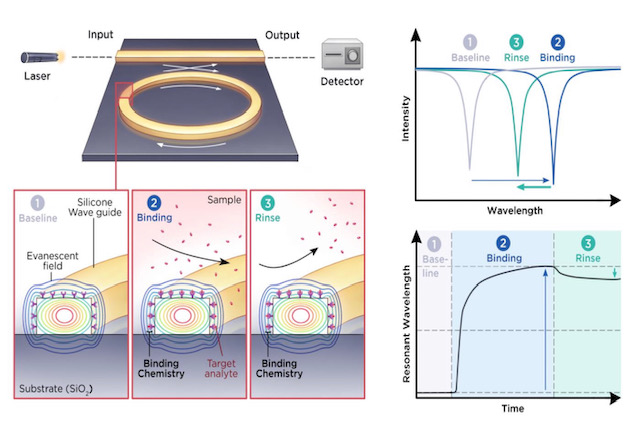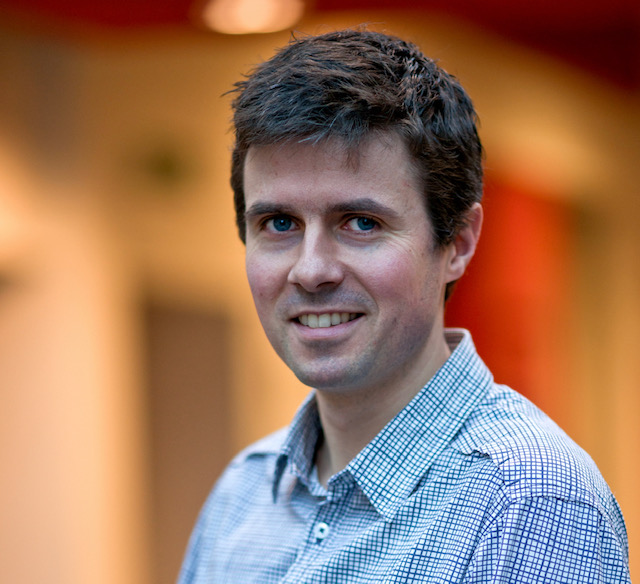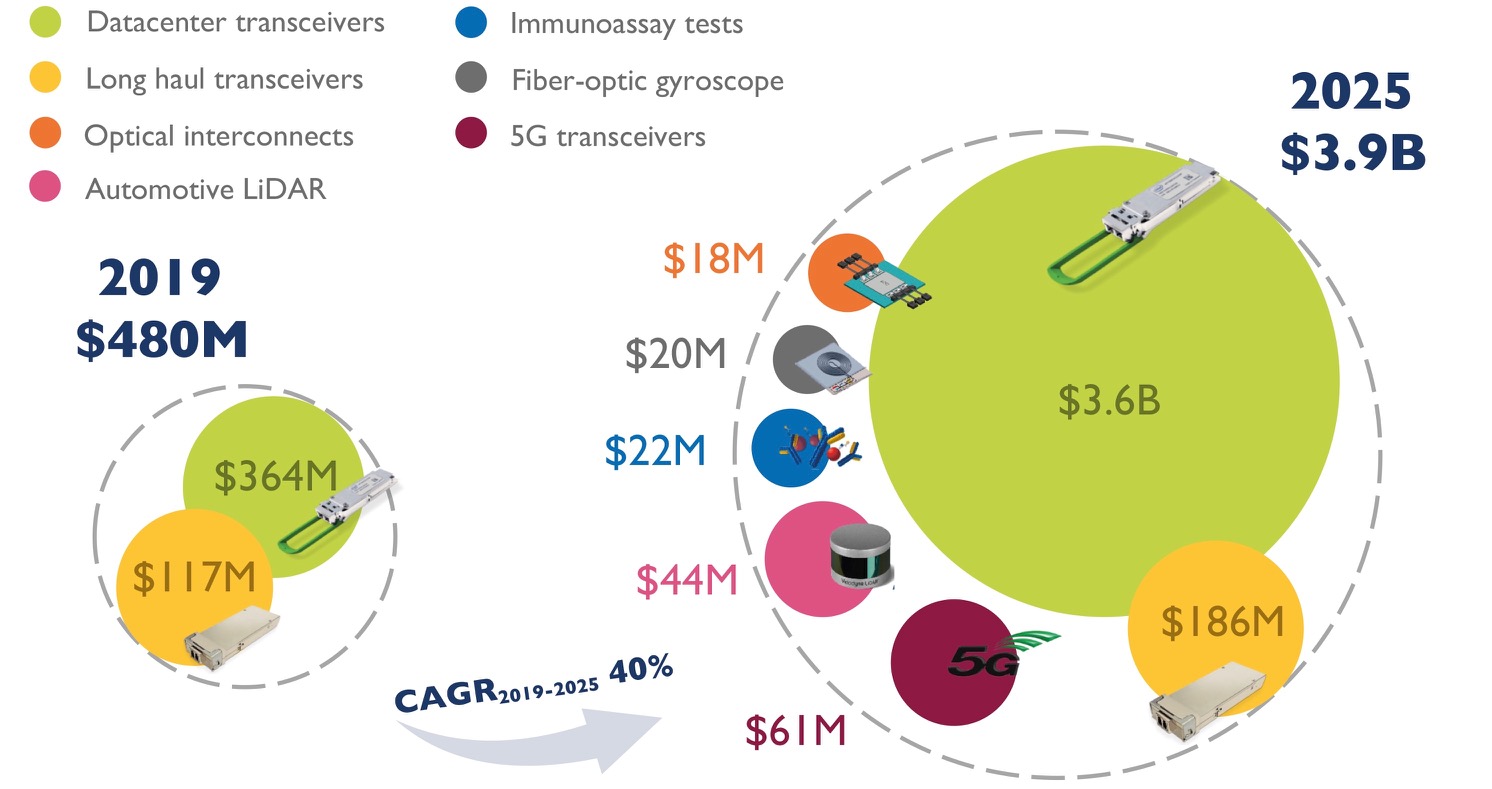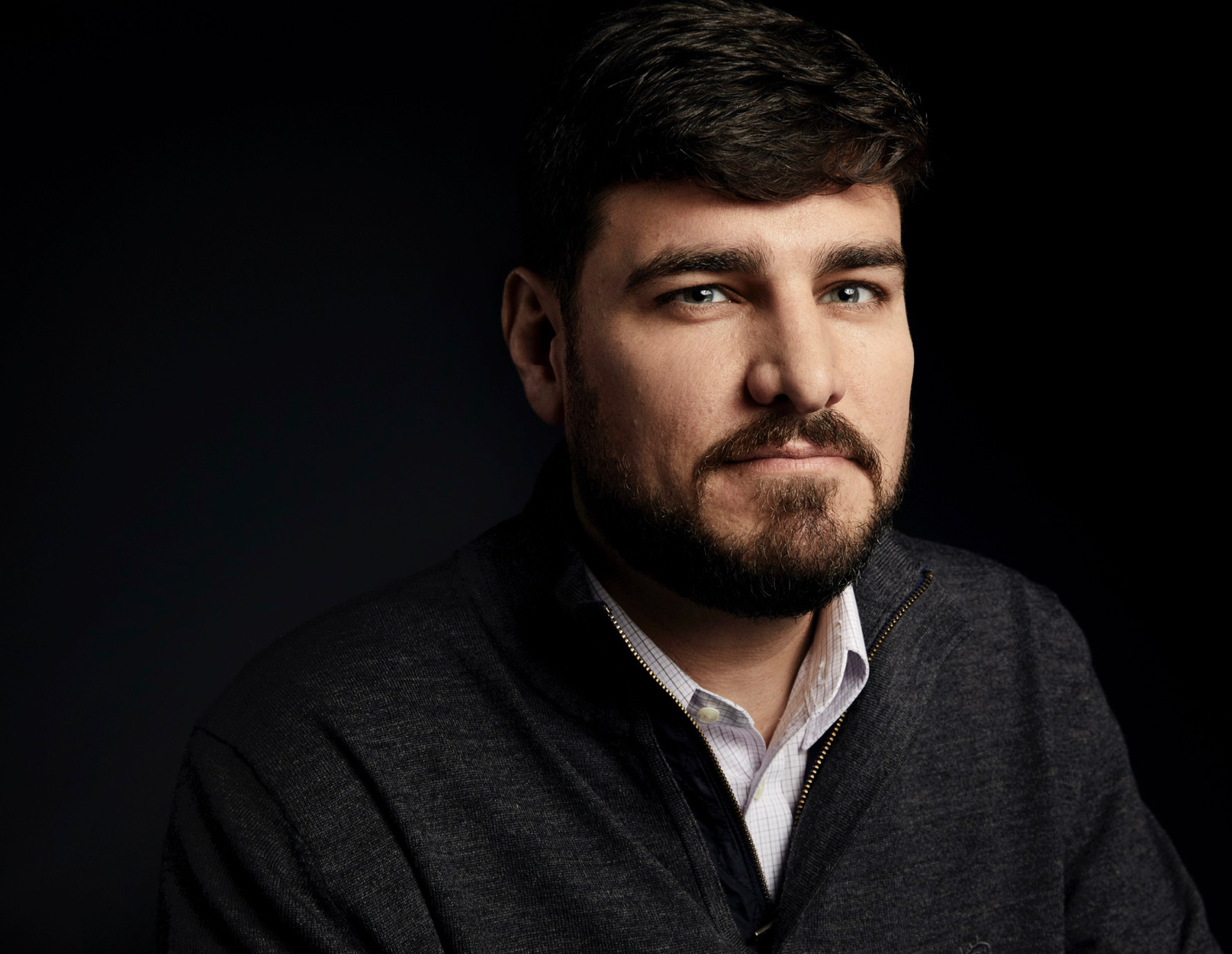SiDx's use of silicon photonics for blood testing
 Friday, July 30, 2021 at 10:07AM
Friday, July 30, 2021 at 10:07AM Part 4: Biosensor start-up, SiDx
A blood sample reveals much about a person’s health. But analysing the sample is complicated given its many constituents.
Identifying a user’s blood type is also non-trivial.
If a patient arriving at hospital needs a blood transfusion, the universal donor blood type, O negative, is administered. That’s because it takes too long - 45 minutes typically - to identify the patient’s blood type. This also explains the huge demand for O negative blood.
 A laser lights the waveguide causing the ring to resonate. The blood sample then flows over the ring causing constituents to bind to the receptors. A rinse stage then removes specific bound components leaving the target constituent that has a signature wavelength shift. Source: SiDx.
A laser lights the waveguide causing the ring to resonate. The blood sample then flows over the ring causing constituents to bind to the receptors. A rinse stage then removes specific bound components leaving the target constituent that has a signature wavelength shift. Source: SiDx.
Identifying blood type promptly is what start-up SiDx set out to address with a platform based on a silicon photonics sensor. The resulting platform does more than just blood-type identification.








